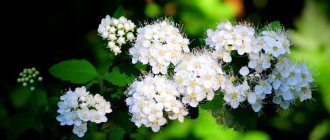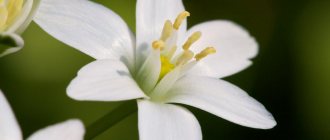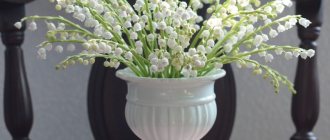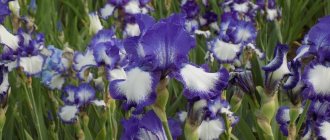On the damp banks of rivers in the tropics of Brazil and South America, an unusually beautiful tree grows - the jacaranda. This is a plant from the Bignoniaceae family. They say it brings good luck. Often, in the house where a child was born, local residents plant a jacaranda, the so-called violet tree.
In Australia, the jacaranda flowering period is from October to November. This time coincides with the end of the school year and the beginning of exams for schoolchildren and students. In this regard, residents call it examination. A blooming panicle falling on the head will bring good luck to those going to the exam.
Rosewood is an evergreen tree of medium or large size, valued not only for its decorative effect, but also for its wood. There are about fifty species of this plant.
Photo gallery
Only mimosolia jacaranda can be grown indoors. It is better to keep it in rooms with a high ceiling, as it reaches a height of two meters. Jacaranda trees must be pruned before growing. More suitable for greenhouses and “winter gardens” than for a standard room in a Russian apartment.
It is non-toxic, does not affect air purification, and does not emit any harmful substances. Does not belong to the class of poisonous, not harmful to children, adults and pets.
Outwardly, it is often compared to sakura, jasmine and lilac. But in indoor conditions you will hardly find any flowering, so it resembles an ordinary plant with a beautiful stem and graceful leaves.
Usage
We have already mentioned that the valuable species of jacaranda wood is highly valued in the world. It is known as rosewood, which is used for the production of luxury furniture, unique luxury items (inlaid with metal and carved items). In addition, magnificent musical instruments are made from this wood.
When polished, the core of the wood becomes a beautiful brown with a purple tint. For example, in Brazil, you can see and buy jacarana souvenirs - carved figurines of exotic animals. They have a very pleasant delicate smell, especially when you wipe them with a cloth.
How does it bloom?
In wild conditions, jacaranda grows up to 15 meters, it has a lush crown and wide feathery leaves that have elongated bright green plates. The tree has large inflorescences with five dozen purple or bluish flowers with jagged calyxes and curved bell-shaped corollas, which are slightly lowered and bent.
Mimofolia jacaranda has violet-bluish inflorescences with small calyxes. The plant with flowers can be seen more often in October and early November. In indoor conditions, it blooms twice a year: in spring and autumn. Varieties of this species, Magdalena and Delta, are also used for cultivation.
Types and varieties
In nature, there are more than 50 species of violet trees and shrubs. But only two species have been cultivated for indoor maintenance: the mimofolia jacaranda and the jasmine or fluffy jacaranda (jacaranda tomentosa).
Fluffy jacaranda (felt)
Fluffy jacaranda (felt)
At home, in South America, its height can reach 15 meters. The complex pinnate leaves are composed of 8 lobes. The flowers of jasmine jacaranda are smaller, collected in paniculate inflorescences. Shades range from golden to purple. Young specimens are grown at home, since as the plant matures, it loses its attractiveness.
Jacaranda mimosifolia
Jacaranda mimosifolia
Other names: Round-leaved or oval-leaved Jacaranda (Jacaranda ovalifolia). On the banks of rivers in Brazil, Argentina and Bolivia it grows in the same way as the previous species. 15-20 meters high, although in room conditions it reaches only 2-3 meters. The leaves resemble the leaf blades of a mimosa, very large, feathery, located far from each other opposite. Elongated in shape, with pointed tips.
It blooms very profusely and amicably with blue or purple flowers. Paniculate inflorescences are collected from buds 5 cm in length and 3 cm in diameter.
This type of plant is the only one that can be grown at home. Mimosal jacaranda has two varieties for growing at home - Delta and Magdalena.
Magdalena
The variety is classified as a fast-growing plant. In indoor conditions it reaches a height of no more than 3 meters. The leaves, like those of all its relatives, are pinnate, complex, and unpaired. Painted in light green tones. It is very difficult to achieve flowering; it can only bloom in the open ground of greenhouses or greenhouses. From the pot, the plant should be transplanted into open soil after the plant reaches 2 meters.
Often used in offices and shops.
Delta
Jacaranda delta is a deciduous ornamental plant for growing indoors. The leaves are fern-like, very beautiful, openwork, delicate light green in color, and grow up to 45 cm in length. With proper care and placement, the plant reaches 2 meters.
Looks great in well-lit offices, hallways and lobbies.
Signs and superstitions
It is believed that jacaranda has a strong magical effect, so keeping it at home is extremely beneficial for the family. This is a tree that gives beauty and brings good luck. It has a number of properties that cleanse the aura and fill the space with positive energy.
It brings prosperity and prosperity. The violet tree purifies negative thoughts and instills harmony and tranquility in the soul. However, for some people it causes apathy and drowsiness.
According to Feng Shui, it is better to place jacaranda in wide spaces near windows. It is not advisable to place it next to the bed and resting place, in the kitchen or in the office.
Signs associated with the flowering of the violet tree are also common. This process promises well-being, brings prosperity to the house and may indicate an imminent addition to the family.
When purchasing a plant, pay attention to your interior. Jacaranda cannot be in a cramped and narrow space; it needs space. Don’t forget to move it into the shade in hot weather, otherwise the leaves may soon turn yellow.
When purchasing, pay attention to the leaves - if they are yellowish at the edges, and the leaves themselves are slightly curved, then this plant may soon wither.
Choose a violet tree with bright green leaves that have a glossy sheen.
Jacaranda tree: application in design
A jacaranda tree grown from seeds at home rarely blooms, so you can’t count on it to bloom. It is used as an ornamental plant, whose lush, openwork crown looks great even without inflorescences.
Jacaranda as Bonsai
The peculiarity of the flower is that it sheds its foliage in winter, and with age it begins to completely get rid of it in the lower part of the trunk, which gradually becomes woody. Professionals have learned to use this characteristic feature for decorative purposes, creating bonsai from jacaranda. With proper pruning, a lush bush transforms into an incredibly beautiful, discreet bansai.
Is Jacaranda suitable for bonsai?
The plant is used for cultivation using Japanese bonsai technology. This allows you to control the growth of the crown and leaves, as well as create your own miniature garden. There is even a separate variety of jacaranda, “Bonsai Blue,” which does not reach a length of more than 75 centimeters. For cultivation, the following conditions must be met:
- in the first year you cannot prune it;
- in the second year, cut to 10 cm and wait for side shoots to appear;
- then pinch the jacaranda, trimming the leaves and crown;
- to form the crown, you can use soft wire, which must be removed after 3 months;
- It is better to cut off all large leaves;
- Jacaranda will branch worse when standing in the shade.
Growing from seeds
The seeds are first soaked in water, to which stimulants are first added (Ribav-Extra, HB-101, Epin, Zircon, etc.). The seeds should be kept in this solution for 5-6 hours. After this, they are sown in light, loose, moist soil (depth - no more than 1 cm). Germination occurs at a temperature of +23...+28 degrees, in the light, under a film. Shoots appear very quickly, after about 10 days, but sometimes germination takes up to three decades. It depends on their quality. Seedlings do not need to be planted until they are three months old, so the seeds should be planted in a fairly spacious container.
With good care, your tree will reach a height of 1.5 m. Jacaranda (violet tree) in Russia (you can see the photo in our article) is an indoor plant. In such conditions it blooms extremely rarely. Flowering species of this plant can only be seen in botanical gardens.
Home care
In summer it is unpretentious and easily adapts to the absence of sun, and in the heat it practically does not dry out. It is recommended to keep it at a temperature of - 13 °C. In winter, it needs a cool room, with a temperature of about 7 °C. Sudden changes in temperature are not allowed, as the plant is in “hibernation”.
High humidity of at least 60% is desirable; daily spraying with soft water at room temperature is required. In winter, you need to water less often, up to once every 3-4 weeks.
The violet tree loves light, so it can be placed in a window all day. Young plants can exist in light partial shade. In winter, additional light sources are needed.
A large clay pot is suitable for planting. Jacaranda must be spacious, it is necessary that there is room for further growth. If the tree grows a lot, it needs to be transplanted into a larger pot. It is recommended to use containers made of natural materials (clay, ceramics).
The magical properties of jacaranda
In the tribes on whose lands the violet tree grows, there are many legends, myths, and superstitions associated with it. In Australia, for example, he is associated with the daughter of the Moon, who flew to Earth on the bird Mitu. The beautiful girl brought people knowledge and wisdom, which she generously shared with them, sitting at the foot of a wonderful tree. Now in Sydney and other large Australian cities, jacaranda grows near almost every university. And students believe that if, while going to an exam, they catch a flying violet flower, or if it falls right on their head, then success during the exam is guaranteed.
Some African tribes believe that the Blue Spirit lives in the crown of the tree. It helps to make the right decision in complex, difficult or conflict situations. Among other peoples, rosewood serves as a kind of amulet for babies. According to tradition, when a baby is born, parents plant a new tree in his honor.
Transfer
To prepare a jacaranda for transplanting you need:
- treat the leaves with a protective spray and trim them;
- prepare a new pot and soil;
- add fresh humus to the soil;
- treat the soil with phosphates.
A transplant may be needed:
- after the purchase;
- because the flower has grown and the pot is cramped;
- due to improper soil;
- due to flower diseases.
Replanting during flowering is undesirable, but is possible only if the plant has been attacked by pests and are beginning to approach the root system.
Transplanting jacaranda after purchase into open ground
Money tree - home care and flowering
Purchase the crop at the garden center. Heat-loving jacaranda can grow only in regions where the air temperature in winter does not fall below 0 °C. As a rule, it is planted in a greenhouse or kept indoors. Otherwise, the jacaranda will die from gusts of cold wind and winter frosts.
Note! An air temperature of +7 °C and below is a great stress for the violet tree, from which it can die.
What is needed for planting
For the seedling, loose, air- and water-permeable soil is selected. The substrate is prepared from turf soil, humus, peat, sand. In the store you can buy soil for crops of the begoniaceae family, which includes the violet tree.
The roots of the seedling quickly entwine the earthen ball. After which the tree stops developing. Therefore, choose a roomy pot for jacaranda. There must be holes at the bottom for draining water.
How to choose the optimal location
The place where jacaranda grows should be well lit. On a hot afternoon, the tender leaves of the seedlings are protected from the sun's rays. In the summer, the crop can be taken out into the open air.
Jacaranda is placed in a well-lit place
An elegant tree needs to be accustomed to new conditions gradually, otherwise it may shed its leaves due to stress. When growing on a windowsill, the pot with the plant is gradually turned clockwise. This is necessary for uniform illumination of the tree crown.
Step by step planting process
Before planting, seedlings are placed in water for 30-40 minutes. You can add several potassium permanganate crystals to the disinfection container. Planting is done as follows:
- A drainage consisting of fine crushed stone, broken bricks, and expanded clay is laid at the bottom of the pot.
- Pour in loose substrate.
- A seedling is placed in the center and the roots are straightened.
- Covered with earth.
- Water generously.
Place the pot with jacaranda in a warm, well-lit place. Water with warm water as needed. To provide air access to the root system, the top layer of soil is loosened.
Important! Every spring, a purple tree is formed by pinching shoots.
Growing and Reproduction
Jacaranda is grown in 2 ways:
- seeds;
- cuttings.
What needs to be done for good seed germination?
- Growing from seed requires good soil.
- It is necessary to choose suitable soil with proper drainage.
- Use small ceramic pots.
- The temperature during germination should be up to 30 °C.
- You need to stretch small cotton wicks through the drainage and lower them into a container of water.
- The top of the drainage should be covered with soil and a seed should be placed in the center.
- The seed must be sprinkled with a small amount of soil.
- The pot should be placed in a transparent plastic container with a lid or grown in a greenhouse.
- It needs to be exposed to the light.
It is necessary to spray as the soil dries using a spray bottle. Shoots appear after 2-4 weeks.
Propagation by cuttings
- Cut the stalk.
- Dry it for several days in a pantry or other dry, dark place.
- Place in a heteroauxin solution for a day to accelerate root formation.
- Add moist substrate to the planting site.
- Plant the cuttings at an angle of 45 °C, adding peat and fine sand to the mixture.
- Cover with film and keep at 25°C.
Botanical description
Most of this genus are evergreen trees, but deciduous trees are also found. Jacaranda trunks are straight, branched, reaching a height of 10–15 m, some specimens grow up to 25 m. The bark is dark gray. The crown is spreading, in the form of an openwork tent. The leaves of the tree are bright green, drooping, large, complex in shape: pinnately dissected, reminiscent of a fern. The mimosolid species is doubly pinnate: the whole leaf consists of 64 small oval elongated plates, transversely arranged in 9 pieces on small cuttings, which, in turn, are collected on a common central cutting.
Jacaranda flowers are bisexual: large clusters of small, about 3–4 cm in size, tubular corollas with 5 petals, similar to violets, usually blue, blue, lavender or violet. The brush size is 15–30 cm. There are varieties with cream, golden or spotted flowers. One of the names of the plant, violet tree, was given to it due to the shape of its petals. Jacaranda has 2 flowering periods: the beginning of summer (in the southern hemisphere it begins in December) and the end of autumn. At this time, the crowns are completely covered with caps of bright flower curls, which persist for 5–8 weeks. The surrounding air is filled with a delicate rich aroma. After the petals fall off, the violet tree begins to bear fruit. When mature, these are oblong, dry, woody pods 5–8 cm long, inside of which there are up to 30 large, flat, teardrop-shaped seeds equipped with light wings.
In Brazil, the flowering period of the tree coincides with passing exams at universities, which is associated with many student superstitions. It is believed that a bunch of flowers or a jacaranda leaf falling on the head will definitely bring good luck.
Fertilizer and feeding
The best “nutrients” are fertilizers based on phosphorus and superphosphate. It is also recommended to use lime, but it should not be combined with acidified soil and alkaline fertilizers. It is better to use fertilizers in dry form, but you can add a little con class=”aligncenter” width=”1200″ height=”1200″[/img]
Organic
Manure, bird droppings, peat, silt, sawdust and tree bark, green manure, composts.
Mineral
They are considered excellent assistants when processing plants, strengthen them and provoke rapid growth.
- Potassium.
- Phosphorus.
- Complex mineral fertilizers.
You can buy mixtures of peat and sand, compost, as well as various mineral fertilizers. Among them: “Superphosphate”, “Ammophos”, “Urea” and others.
Kornevin is a cream-colored powder, a small amount is used in dry form, suitable for dipping the end of the cutting when transplanting for better rooting or rapid development of roots.
Heteroauxin is the main phytohormone of plants, promoting active metabolism and preventing rapid leaf fall.
You can prepare fertilizers at home by mixing natural ingredients with mineral ones.
It is necessary to feed during growth once every 2 weeks. It is very useful for jacaranda to use organic fertilizers, alternating them with mineral ones even during the dormant period. Watering
Water the jacaranda sparingly, as it does not like excessive moisture. It needs abundant watering during the period of active growth - from spring to autumn. The water should be at room temperature and soft; do not water it with cold water, as the violet tree may “get sick.” In winter, you need to water less often, and in especially cold months, up to once every 3-4 weeks.
Jacaranda care
In total, more than 50 species of jacaranda are known, but only two varieties are suitable for growing indoors: mimosolia, whose leaves resemble mimosa leaves, and fluffy, which is also called jasmonic. Mostly young plants are used for keeping in the room, since adults usually do not have leaves on the lower branches, which reduces their decorative qualities.
Priming
Most gardeners note that the violet tree does not bloom when grown as an indoor flower. Obviously, this is due to the fact that the plant does not have enough space. As the flower grows and develops, it needs to be periodically planted in a larger container, this can be an ordinary ceramic pot or tub.
You need to lay high-quality drainage at the bottom: the bottom layer is broken, crushed brick, and on top is a layer of coarse river sand. To prepare the soil, take 1 part of sand or perlite, peat, humus, leaf soil and 2 parts of turf. You can grind a piece of charcoal and mix it with the rest of the ingredients.
Transfer
Jacaranda is transplanted in several cases:
- after purchasing from a specialized flower shop;
- when the plant has grown and is already cramped in the old pot;
- if the soil was prepared incorrectly last time;
- the plant has been attacked by pests or has been affected by a disease.
It is not advisable to replant a flowering plant. The exception is those cases when the jacaranda has been attacked by pests that can damage the root system.
Reproduction
To obtain new young violet tree plants, two methods of propagation are used.
- Seeds
This is the simplest method that does not require attention and careful maintenance. Take special containers for germination or small ceramic pots. To avoid the need to monitor the moisture of the soil, use rag wicks, which need to be lowered with one end to the bottom and the other end into a container with water. Place drainage compound on the bottom, then a layer of soil. Place one seed in the center. Seeds should be purchased only from trusted producers. Sprinkle a light layer of soil on top, water gently, cover with a clear plastic lid or plastic wrap and place in the sun. For seeds to germinate, they need to create greenhouse conditions: high humidity and temperature. After 2-4 weeks, a sprout should appear above the soil surface, after which the cover (film) must be removed. Until the seedling reaches three months of age, it is not recommended to disturb or replant it.
- By cuttings
Carefully inspect the tree and select young, healthy shoots. Carefully cut cuttings about 8 cm long with a sharp knife or pruning shears and keep them in a dark and dry place for several days so that the cut area dries out slightly. Dip the cuttings in a growth stimulator to speed up root formation. Prepare containers for germination by filling them with drainage and soil, and moisten them thoroughly. Plant the cuttings with a slight slope (about 45º). Cover with film or a transparent plastic bottle, place in the sun and wait for young leaves to appear on the shoot. This will mean that the shoot has taken root and the plant is ready to be transplanted to a permanent location.
Fertilizer and feeding
The plant is very demanding regarding the content of nutrients in the soil. The best fertilizers will be mixtures based on superphosphate and phosphorus. They can be used either dry or as a solution when watering. You can also use organic (bird droppings, humus, peat) and mineral fertilizers (phosphorus, potassium). Fertilizers help strengthen plants and promote rapid growth. During the period of active growth, jacaranda is fed once every 2 weeks. During the rest period, this can be done less frequently or eliminated altogether.
Watering
Adult plants do not require a large amount of water, with the exception of the summer season, when jacaranda actively grows, develops, and blooms. At this time, it needs to be watered with warm, soft water, and the leaves should be regularly sprayed with a spray bottle. In winter, during the dormant period, the tree is watered no more than once a month, but without allowing the earthen clod to dry out completely.
Trimming
In order for the plant to retain its characteristic decorative effect for as long as possible, young shoots are pinched in the spring. In addition, pruning is mandatory before replanting into a larger pot.
Diseases and pests
Jacaranda is quite resistant to diseases and biopests. But this can happen even when grown indoors as a result of improper soil selection, improper care, pests can “move” from neighboring indoor plants, or when you take your “pets” outside to the balcony “to get some fresh air.”
Excessively frequent watering, lack of or incorrectly selected drainage composition can lead to stagnation of water and rotting of the root system. If the grower “forgets” to water the plants while they are standing, they are standing in a draft, they are exposed to cold air, then the leaves begin to turn yellow, curl, and fall off. In these cases, it is necessary to provide the trees with comfortable conditions, good lighting, and adjust the frequency of watering.
A slowdown in growth combined with yellowing of the leaves indicates a lack of iron, magnesium, zinc, sulfur, and an excess of lime in the soil. In this case, the plant needs to be transplanted into a new nutrient soil and fertilized using fertilizers of the appropriate composition.
Pests that can most often affect jacaranda when grown in a winter garden, greenhouse or on an indoor windowsill include: whitefly, aphids, and spider mites. To avoid infection, you need to regularly inspect not only the violet tree, but also other indoor plants located in the immediate vicinity. Moreover, the inspection must be carried out very carefully. Aphids usually attack the tops of young shoots, which leads to slower growth. But whiteflies and spider mites inhabit the lower part of the leaves. In the first case, you can first observe small greenish larvae, and then white midges. In the second there is a thin cobweb entangling the leaves from below.
To combat them, special insecticides are used - pest control agents. As a preventive measure, regularly spray the plants with water and maintain high humidity in the room.
Diseases
Leaves curl and turn yellow
Possible reasons are dry air and soil, cold, drafts. It is recommended to inspect your jacaranda for pests. If insects are not found, you need to adjust the care and maintenance regime.
Leaf chlorosis
Develops due to high lime content in the soil, poor watering, deficiency of iron, magnesium, sulfur and zinc. Accompanied by yellowing of leaves and slow growth. They are transplanted into nutritious soil and fertilized with fertilizers with a high content of missing microelements.
Root rotting
Lack of drainage, dense soil, excessive watering. Check the condition of drainage and soil. If necessary, replant the plant, stop watering, then water moderately.
Pests
Whitefly
Green larvae are visually visible on the underside of the leaves. They leave behind a sugary discharge. The foliage curls, turns yellow and falls off. The pest is a small white midge. Spraying with insecticides is carried out every 3 days. The drugs Inta-vir, Actellik, and Fufan have proven themselves well.
Aphid
Primary lesions are found on young leaves, at the very tops of the shoots. The affected parts of the plant curl, become sticky, and the jacaranda gradually withers. It is recommended to spray with Derris, Actellik, and Fitoverm. If the number of insects is small, you can try treating the plant with a soap solution.
Accommodation
Jacaranda prefers bright light; it tolerates direct sunlight for about 3 hours. The plant feels comfortable near western and eastern windows. The pot must be rotated periodically, since one-sided lighting can deform the crown.
The temperature required for normal plant development in summer is +25 °C, in winter – +19 °C. In summer, jacaranda loves to “walk” in the air. In this case, the place where you place the flower should be protected from the wind.











